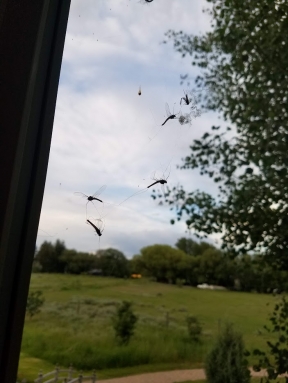
Right now most anglers are focusing on the salmonfly hatch. This year the salmonfly fishing has been very inconsistent. Most years it’s inconsistent. Back when it was more dependable there were about a third the number of boats on the river. I’m not pointing fingers as a good number of them are our fishing guides. It’s my own opinion that the main impact on the salmonfly hatch is fishing pressure.
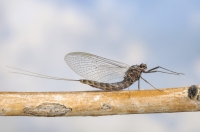
While most anglers are still pounding the banks with salmonfly patterns one of the biggest questions I have been receiving is “What do you think the Gray Drake hatch will be like?” I’ve always felt pretty comfortable with my understanding of aquatic insects, especially mayflies. I studied them with Dr. George Edmunds at the University of Utah. Before Dr. Edmunds passed away he was considered the top expert in the field.
I hate to admit it but there is one mayfly that continues to stump me – Siphlonurus occidentalis commonly known as the Gray Drake. Here’s what I know about these interesting large mayflies.
What I Know
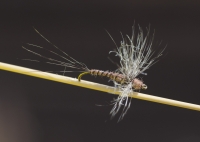
1. Of the four types of mayfly nymphs Gray Drakes are classified as swimmers. If you are sitting or walking along the margins of the stream you’ll see these large nymphs darting around. In fact, they can swim about as well as a small minnow.
2. When they get ready to emerge, they migrate to bankside or surface structure. In general they don’t emerge at the surface of the water like most other mayflies. Instead, they crawl out to emerge. They love soft water flooded up into the grass.
3. The large duns are not usually very significant. Normally you won’t see many of them on the water. I have had some good days fishing the duns on the Yellowstone River in the park and the Upper Teton River in the fall.
4. The real action starts when the spinners mass for their mating flights over the water. Even though the nymphs usually seek out quiet water the mating spinners head for moving water or riffles. These spinner flights can be overwhelming. We’ve seen evenings when the spinners were so thick the fish wouldn’t eat them because they were so full. My photo of Gray Drake spinners on a post was taken near the Subway in St. Anthony in June, 2011.
What I Don't Know
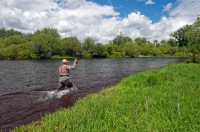
Here’s what I don’t know about gray drakes. What factors influence this hatch? In the old days the hatch didn’t seem to be so erratic. You could pretty much depend on a decent hatch of gray drakes on the lower Henry’s Fork every year. Today there seems to be a correlation with the amount of spring runoff and the intensity of this hatch.
I’ve discussed this with Dr. Rob Van Kirk of the Henry’s Fork Foundation. Rob believes changes in irrigation practices has had a significant impact on these big mayflies. Early settlers developed sub-irrigation here on the lower Henry’s Fork in the Egin Bench area. With sub-irrigation, farmers ran enough water through their ditches to keep the ground water close to the surface. Farmers dug holes in various parts of their fields to check the sub water to keep it at an acceptable level. Pivot systems quickly replaced sub irrigation. Unfortunately when a neighbor converted to sprinklers his neighbors couldn’t maintain the sub levels so they had to switch to pivot irrigation.
2018 Similar to 2023
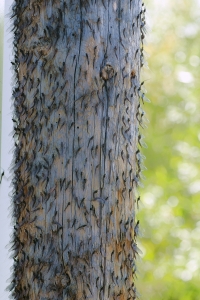
Water sprinkled on crops on the surface produces much more evaporation so there is less ground water. Today, the only years we have good Gray Drake hatches is when we have high water to flood the margins of the stream.
The June 18th photo got me thinking what the water conditions were like in 2018? I went to our website and clicked on Regional Water Information. From there I selected Idaho Stream Flows and scrolled to the Henry’s Fork at St. Anthony. I put in a date range of May 20 – June 10, 2018. Amazingly the recorded stream flows in 2018 were very similar to today.
In 2018 the flow on May 20th was 3500 cfs. It climbed to 6000 cfs on May 23rd and dropped back to 5000 cfs on June 2nd. At the end of the period on June 10th the flow was 3600 cfs. The average for this period is about 3000 cfs.
This year the flow on May 20th was 5400 cfs, 5000 cfs on May 24th, and 4400 cfs on June 2nd. The flow today is 3500 cfs. The highest flow in 2018 peaked at 6000 cfs on May 23rd. The peak this year was 7000 cfs which occurred on May 17th.
The Gray Drakes will Come Later
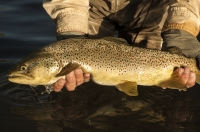
I’ll admit this isn’t rocket science but one of the best ways to make an estimate on what the hatch will be like is to find a water year similar to this year. With this in mind what can we expect this year? The first thing is very obvious. From the photo from my window in 2018 it is evident that the hatch was in full swing on June 9th. This year we haven’t seen a sign of the Gray drakes. Now that the flow has dropped significantly from the Island Park Dam the flow will also decrease on the lower river. The lower flow can increase water temperatures enough to spur all of our lower river hatches including Golden Stones, caddis, PMDs, Green Drakes, Flavs, and of course, Gray Drakes.
The final question is will we have a good Gray Drake hatch this year? Based on the information I’ve shared I think we will. When will it start to occur? We should be in full swing by June 20th.